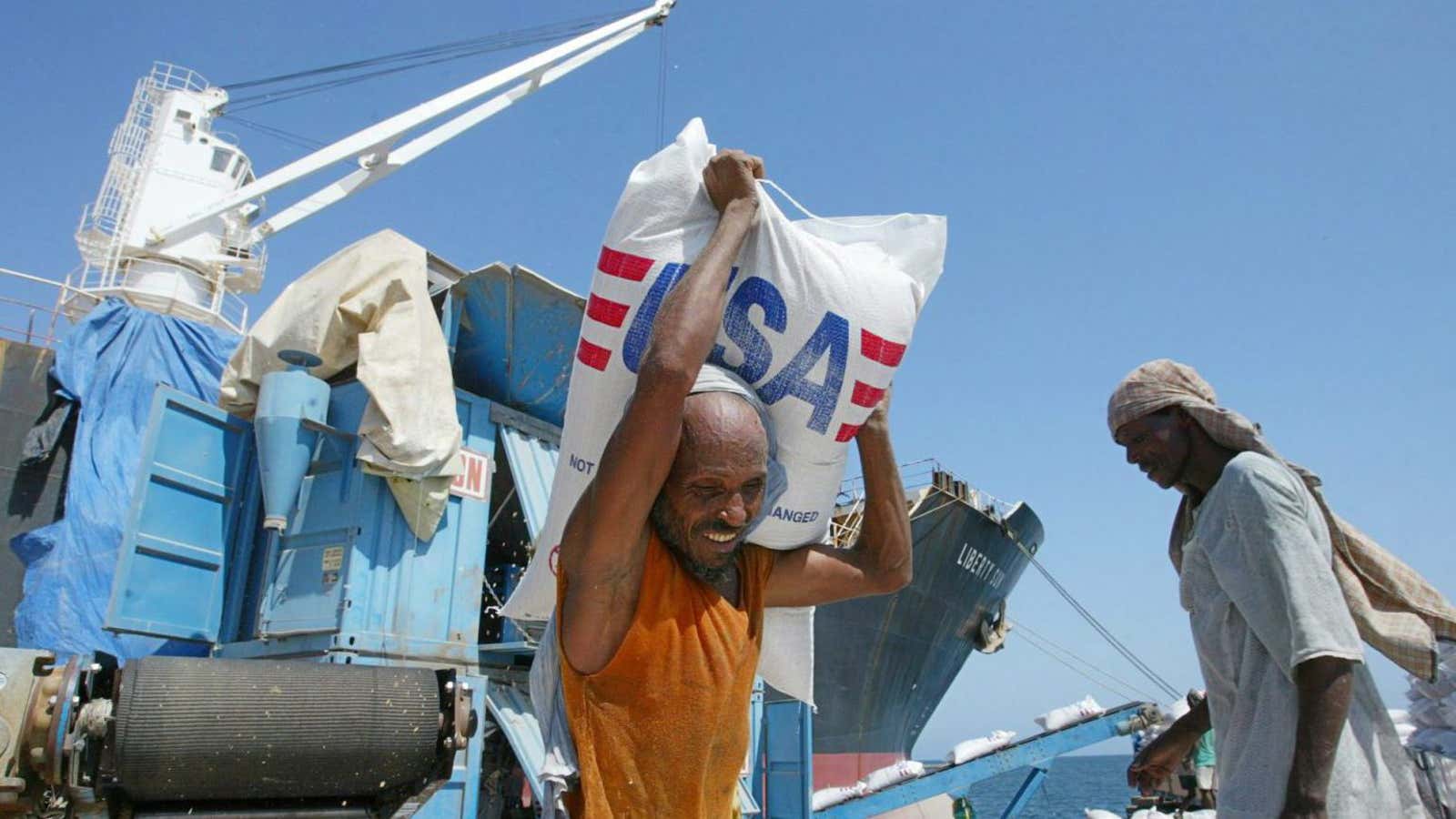Donald Trump told the UN General Assembly the US is “taking a hard look at U.S. foreign assistance” and would “only going to give foreign aid to those who respect us and, frankly, are our friends.”
The way his administration will determine which countries it support is much more quantifiable than the president’s words would suggest, according to US Agency for International Development (USAID) officials. They have been working for months on a proprietary internal algorithm that will evaluate needy countries’ ability to wean themselves off foreign aid, based on the strength of their government, civil society, economy, and political commitment. The US will make funding decisions based in part on how a country fares on this ranking, part of a push to help foreign-aid recipients on their “journey to self-reliance.”
Mark Green, the Trump-appointed USAID administrator and a former Republican congressman from Wisconsin, laid out the framework and its rationale at a conference running parallel to the UNGA in New York yesterday (Sept. 25). “The very purpose of foreign assistance must be ending its need to exist,” Green said, and all US aid programs should be looking forward to “the day when it can end.” The US will give based on “how far each of our investments takes us a little bit closer to that day.”
Green displayed a scatterplot graph during his presentation to show where countries ranked, without the country names on it. “Each of those dots is a country somewhere on the journey to self-reliance,” he said.
How countries rank related to one another won’t be public. USAID will start publishing reports Oct. 1 on the nearly 90 countries where it operates, assessing the strengths and weaknesses of their governance, economy, health care, and other factors.
“There’s always more need than resources, that’s a flat-out reality in the world that we live in,” said James Richardson, the top assistant to Green and head of USAID’s “transformation task team.” The US will always offer humanitarian assistance based on need, he added, but the ongoing re-evaluation will address the effectiveness of development and other programs. (Richardson was previously chief of staff for congressman Mike Pompeo, now secretary of state.)
The review is part of a sweeping overhaul of the 4,000-employee USAID, which has an annual budget of $16.8-billion. The first Trump budget proposed slashing USAID’s funding by 30%, and the White House suggested merging it into the State Department. Congress did not approve the cuts, however. Green, Pompeo, defense secretary James Mattis, and others convinced the president of the strategic advantages of foreign aid—especially in the face of China’s rising global power, as the Washington Post reported this week.
Richardson emphasized the overhaul was not political. “I have 800 USAID career employees working on the transformation, trying to make sure we get this right,” Richardson said. “It’s not a partisan thing, it is an enduring thing,” he said, adding he believed the agency would hew to the new focus for the next 20 years, not just for Trump’s term. The overhaul will be ”staffing neutral and budget neutral,” Richardson said. “This is not a staff-cutting or budget-cutting enterprise.”
The US, the world’s most generous aid donor when ranked by total money given, provided about $31 billion in 2015, both directly and through institutions like the World Bank. It falls to number 20 when ranked by the percentage of gross national income donated (Sweden is first).
